Today is the final installment of The Glam Pad’s week-long focus on the illustrious artist, Hunt Slonem. To get caught up, you can read Part 1 here and Part 2 here. Slonem may be one of the world’s most celebrated living artists, but his most ambitious project has been his mission to save America’s often forgotten historic buildings.
Realizing too many of the country’s architectural gems have fallen into disrepair, Slonem has found himself drawn to these national landmarks, inspired by the depth of their age and old-world beauty. Among his accomplishments are the restorations of Cordt’s Mansion in Kingston, New York; the Lakeside and Albania mansions of Louisiana; and the Scranton Armory and Charles Sumner Woolworth’s mansion in Scranton, Pennsylvania. His sixth and latest endeavor is Belle Terre, a storied property in South Kortright, New York.
“When I was young, I learned that Picasso collected chateaus, and I dreamed of doing something like that my whole life. Having reached that goal with these historic homes, I would like them to become part of my legacy, where people use them as study centers that can educate and inspire new generations of artists,” Slonem explains.
Slonem usually owns seven houses at once, and today we will take a peek inside some of the beautiful interiors!
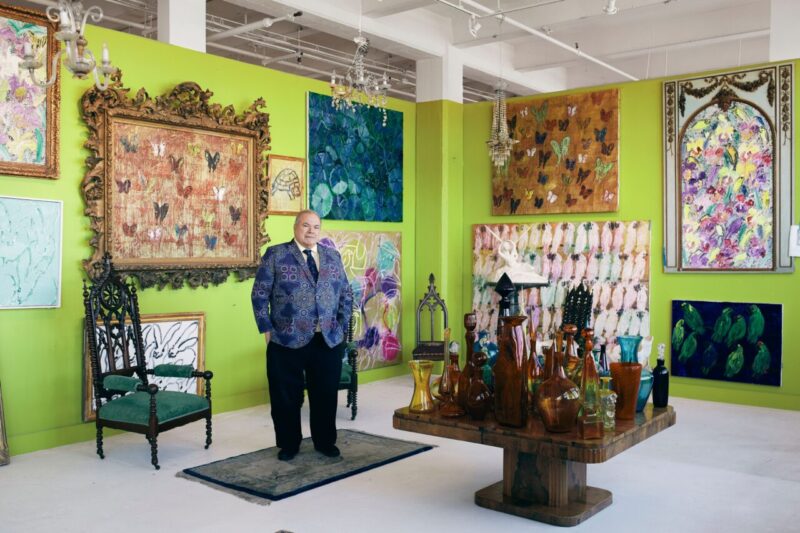
CORDT’S MANSION 1873, KINGSTON, NY: CORDT’S MANSION
A looming 19th-century titan was the first historic property Slonem purchased, in 2001. Built by a German merchant from Prussia, this Second Empire gem sits perched atop a hill overlooking the Hudson River, with a palpable history that Slonem says stunned him when he first set foot on the property. The original gazebo and carriage house remained intact, while the four-story tower stood out as a distinguished centerpiece.
Slonem has worked hard to maintain the classical atmosphere of Cordt’s Mansion: he has refurbished the amenities; repainted its walls with brilliant reds, yellows and greens; wallpapered rooms in his own designs; installed new chandeliers; and hung photos of the Cordt family, whose presence still lingers through the halls.
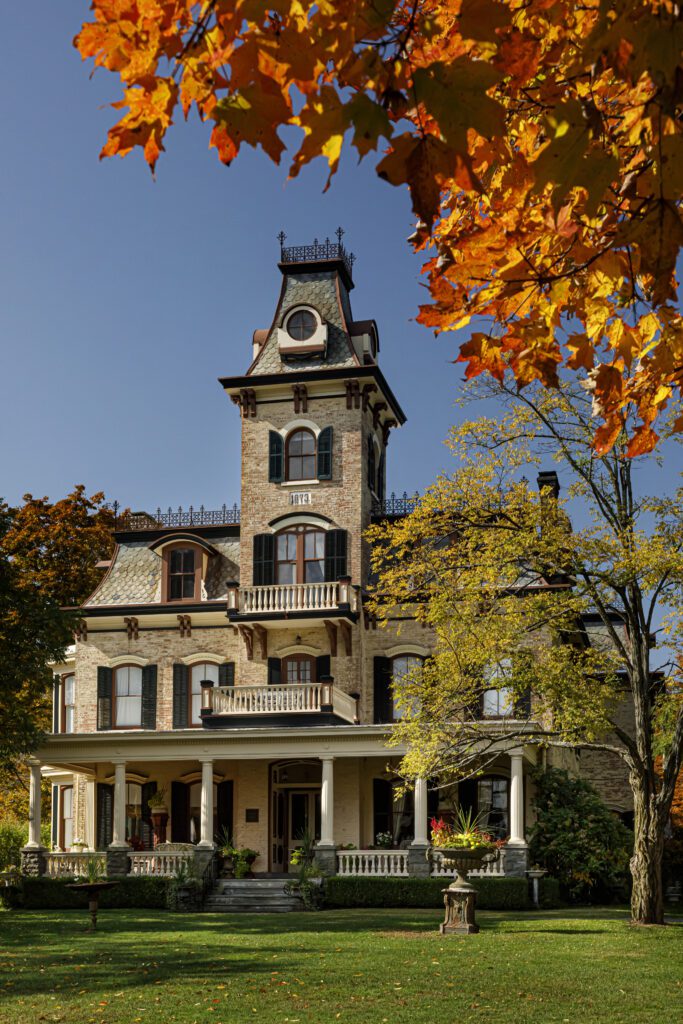
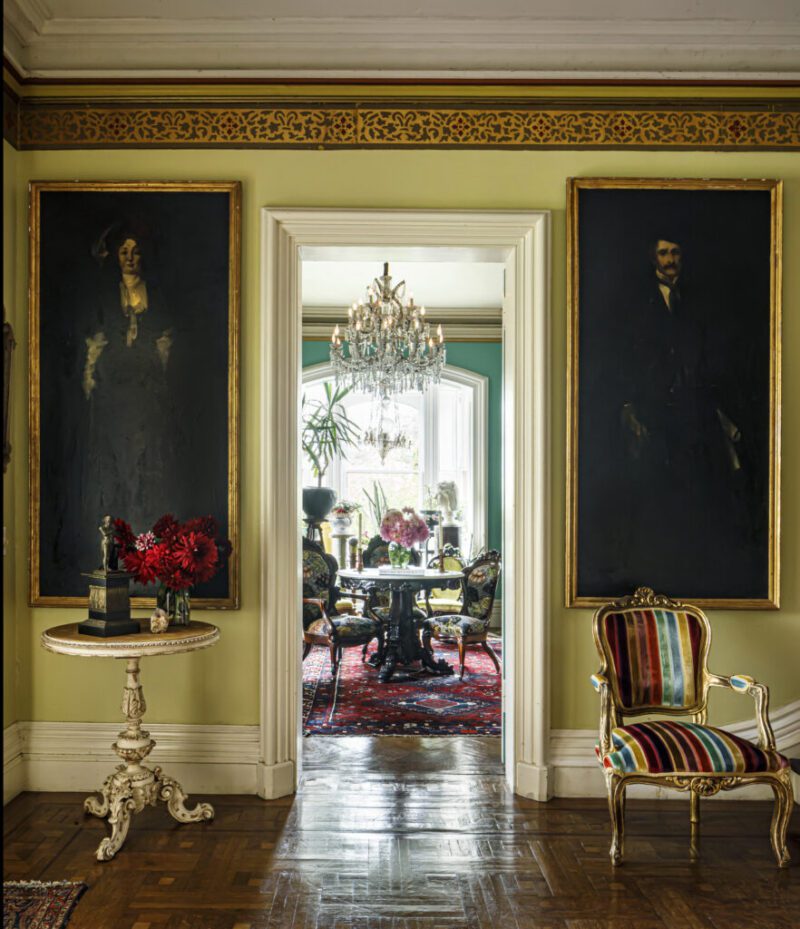

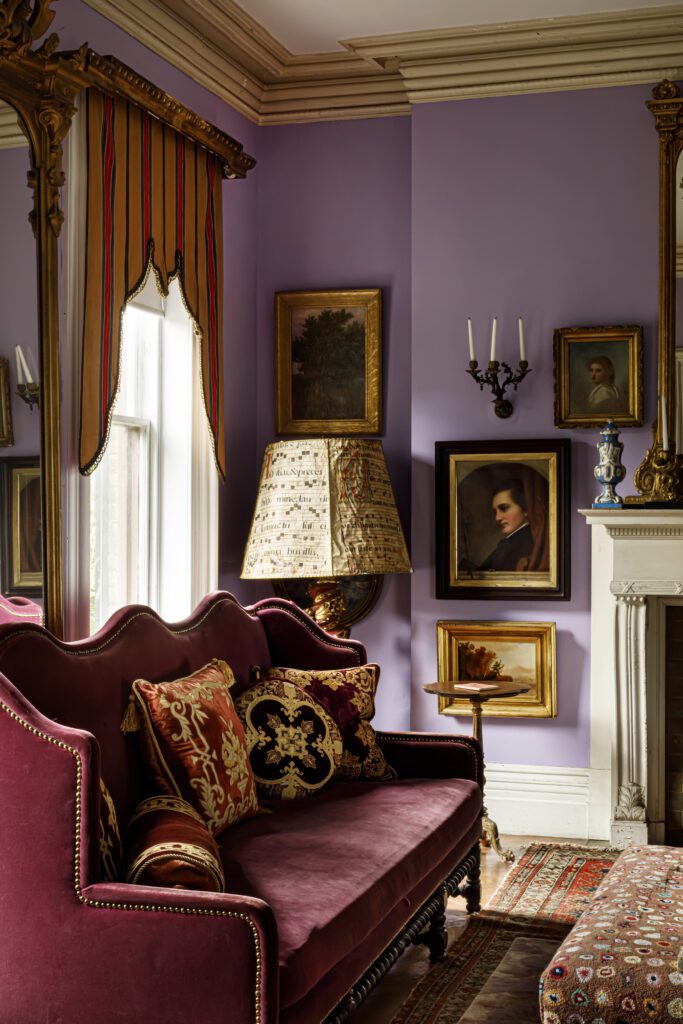
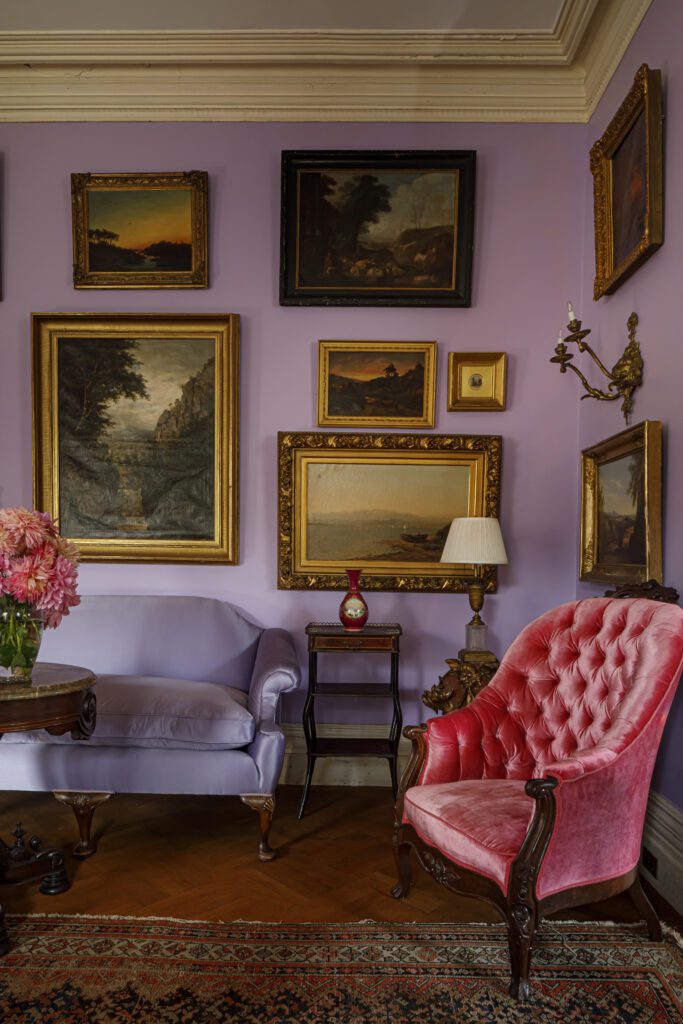
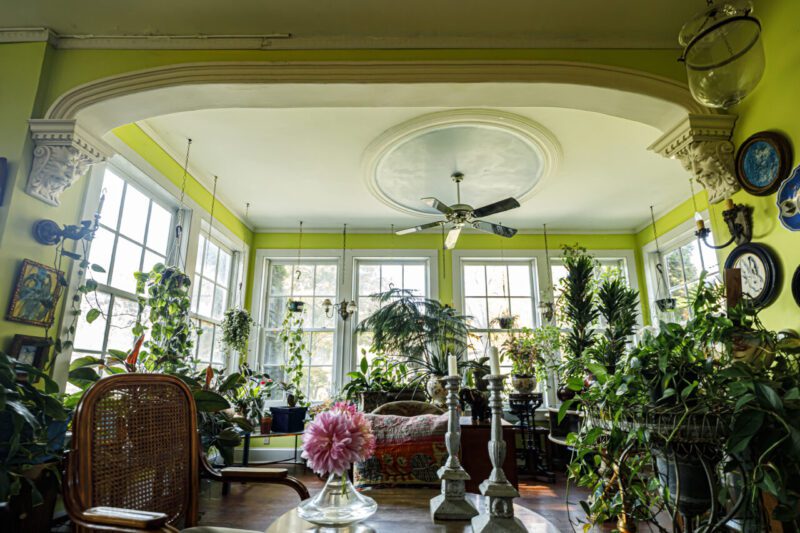
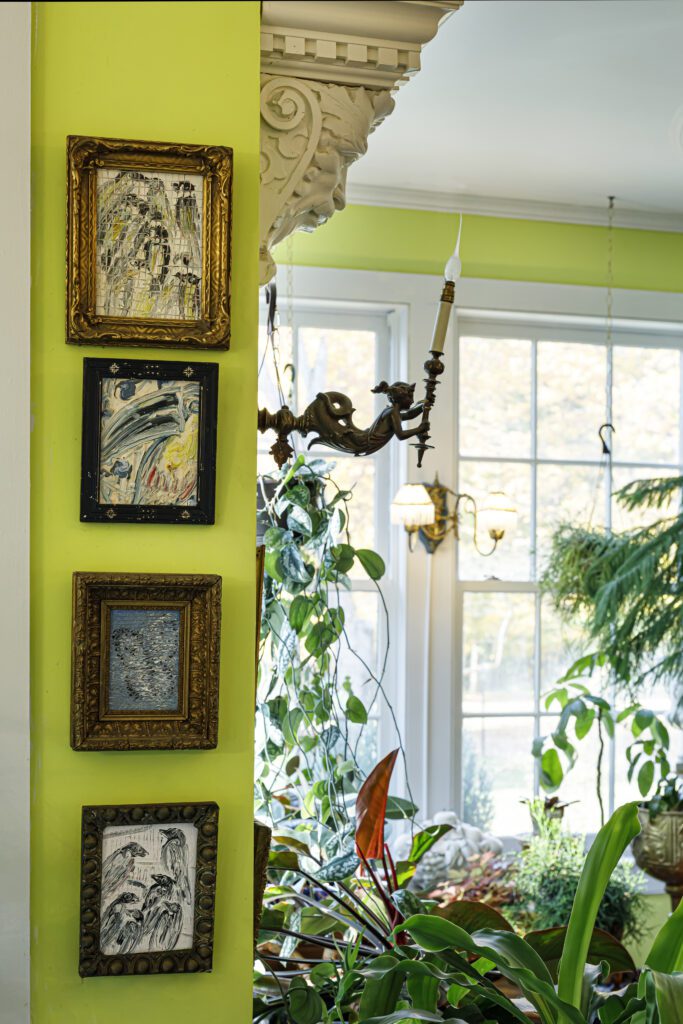
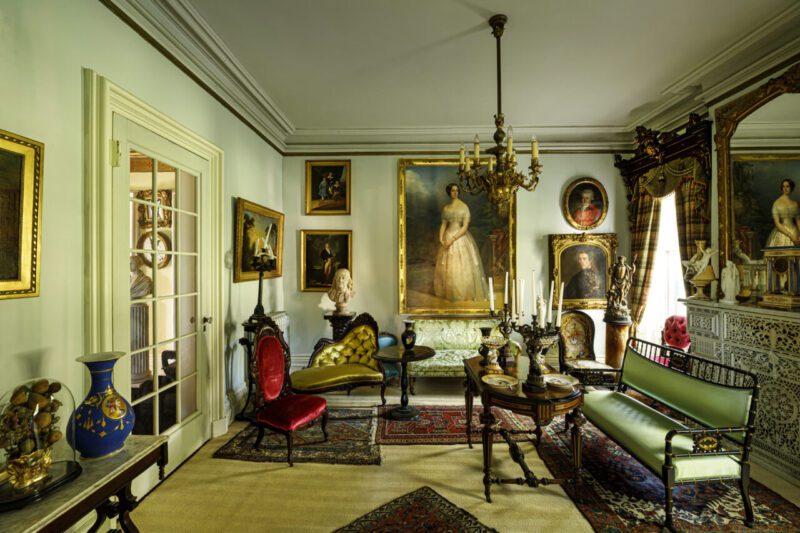
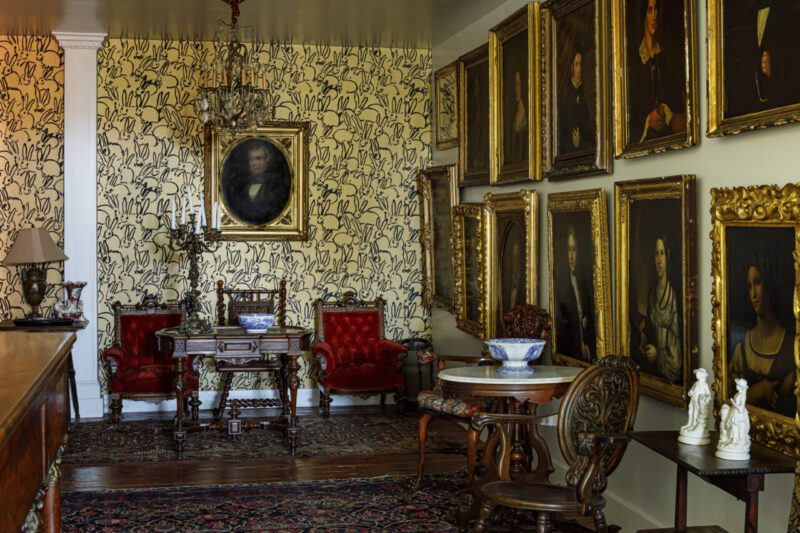
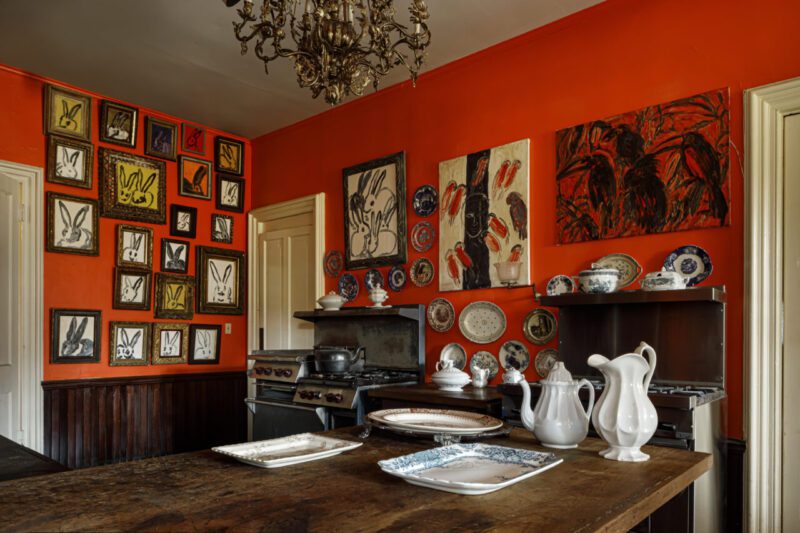
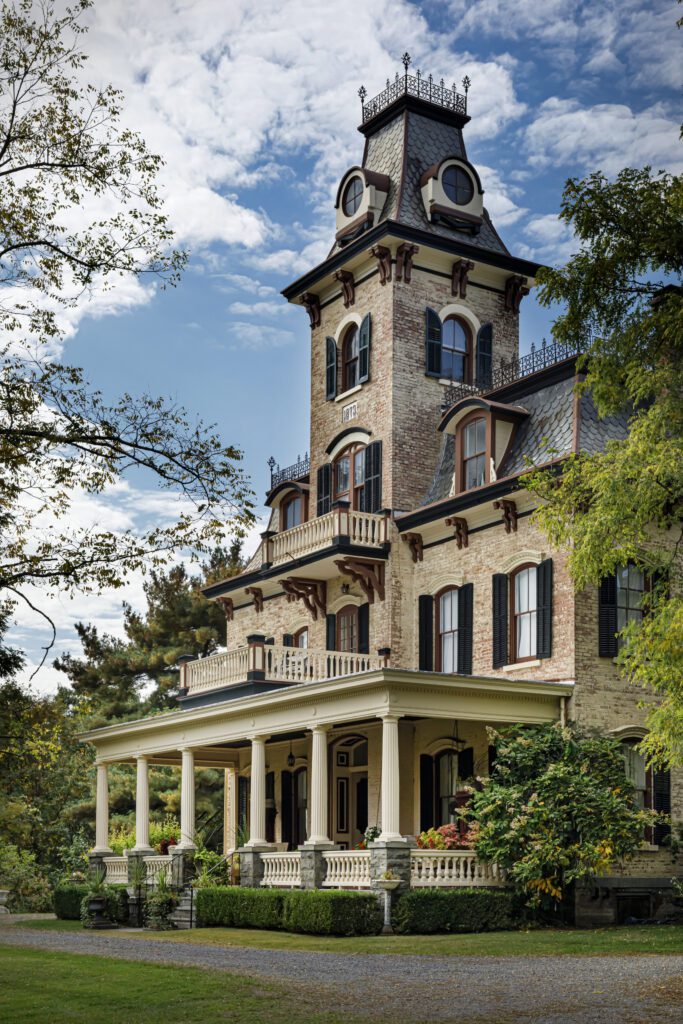
WOOLWORTH MANSION, 1910, SCRANTON, PENNSYLVANIA
This magnificent Beaux Arts home, built by the department-store entrepreneur Charles Sumner Woolworth, looms large like a diamond in its neighborhood. But while its stately limestone exterior and a three-story carriage house mesmerized Slonem upon first sight, this reclamation project would turn out to be his longest, toughest yet—and also the most rewarding.
He has put in the driveway, recreated a missing wrought-iron balcony, ordered specially crafted moldings and wood carvings, and handpicked the classical light fixtures. Slonem’s meticulousness recalls the expert craftsmanship that went into creating this majestic beauty more than a century ago.
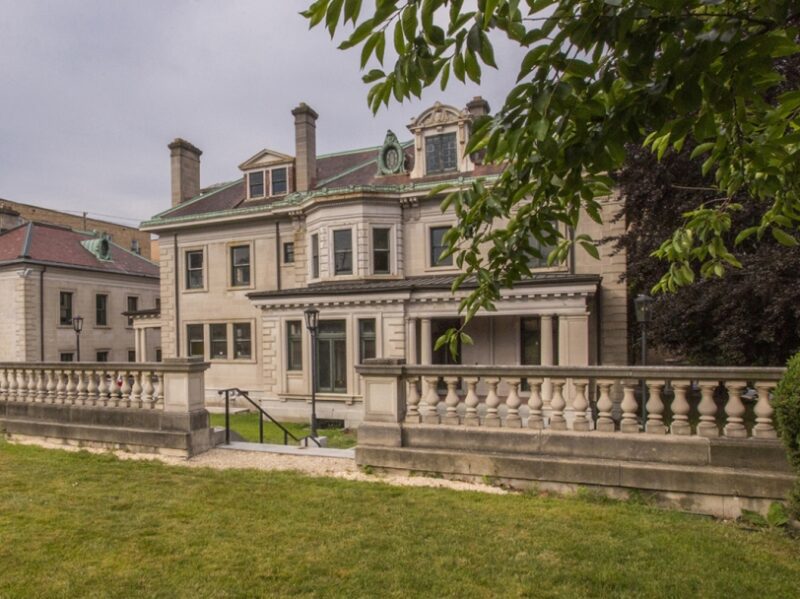

“You can see that I leave the patina in the hallway. I did not repaint the grand, French, heavily plastered motif in the hallway. It looks like a chateau from the 1700s,” Slonem said. “You can always repaint. You can’t recreate the way it looks now.”
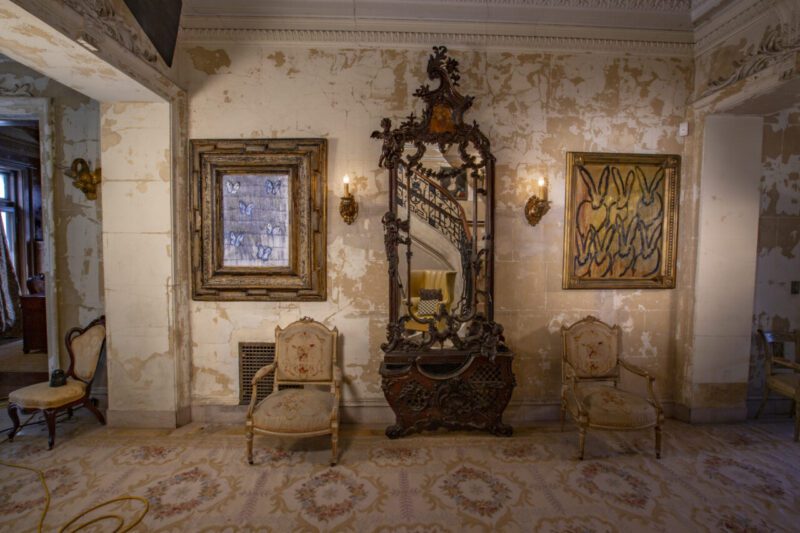
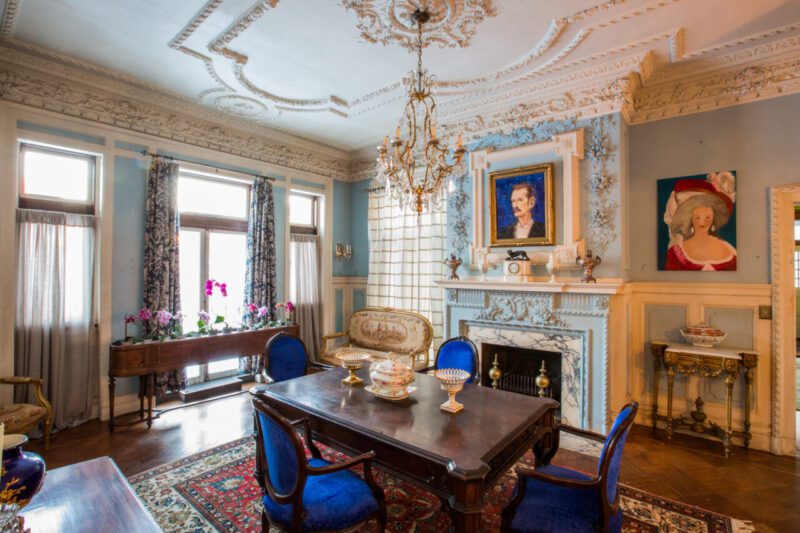
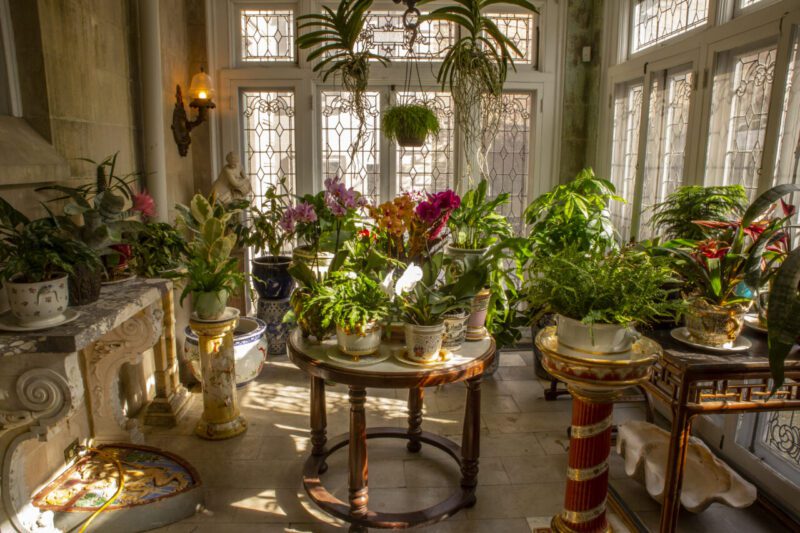
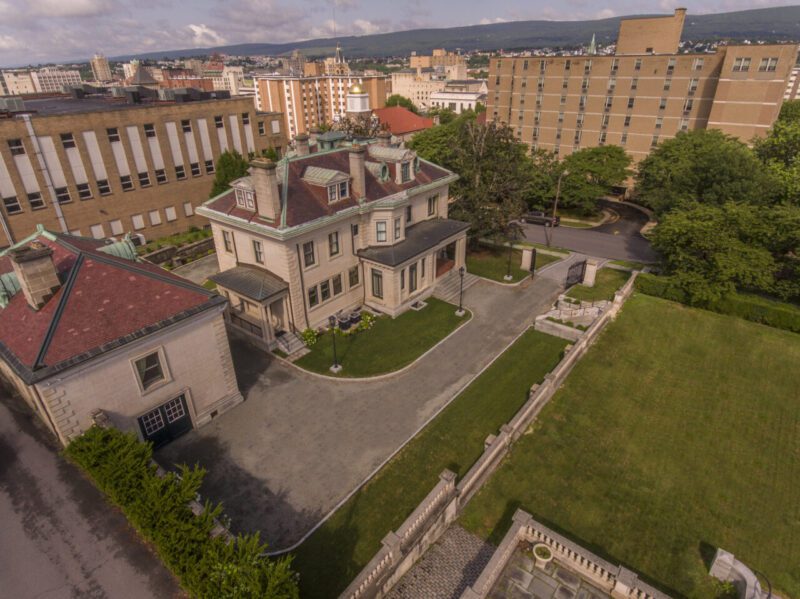
ALBANIA MANSION, 1842, JEANERETTE, LOUISIANA
This mansion once spanned 6,500 acres, the core of an empire founded by Charles Grevemburg. The hefty all-white building passed hands several times over the next hundred years, including a time when it was owned by the founder of the New Orleans Museum of Art—a fitting precursor to Slonem’s purchase. With gently curving staircases and dark-wood floors, Slonem has accented the rooms with gold-framed mirrors, swooping furniture and modern works of art. Direct links to its past can be found in subtle ways: the name of Matilda Grevemburg, Charles’s long-deceased daughter, can be found scratched into one of the windows.
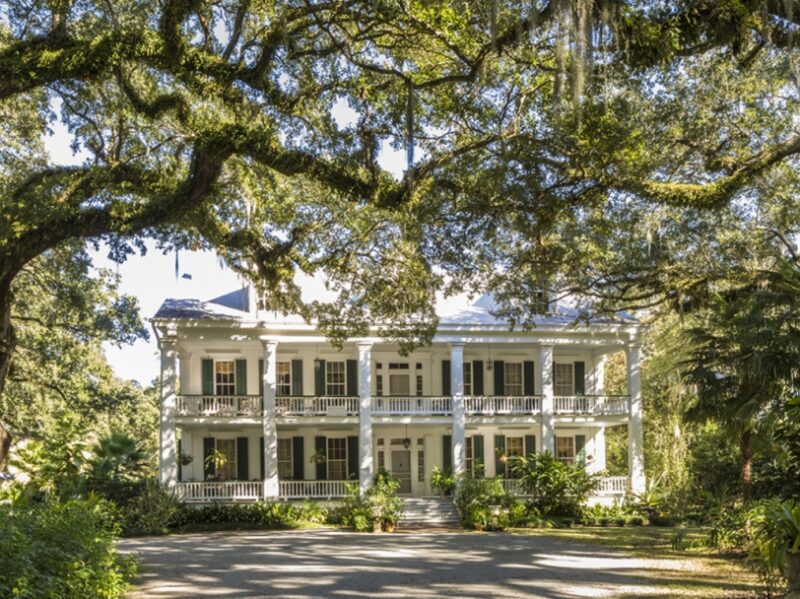
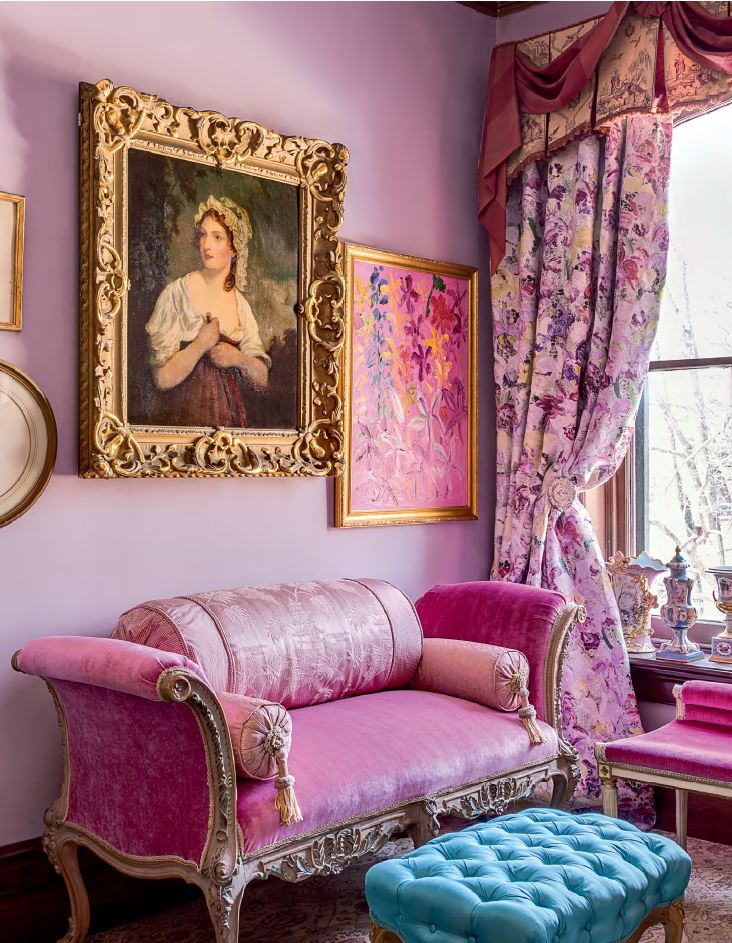
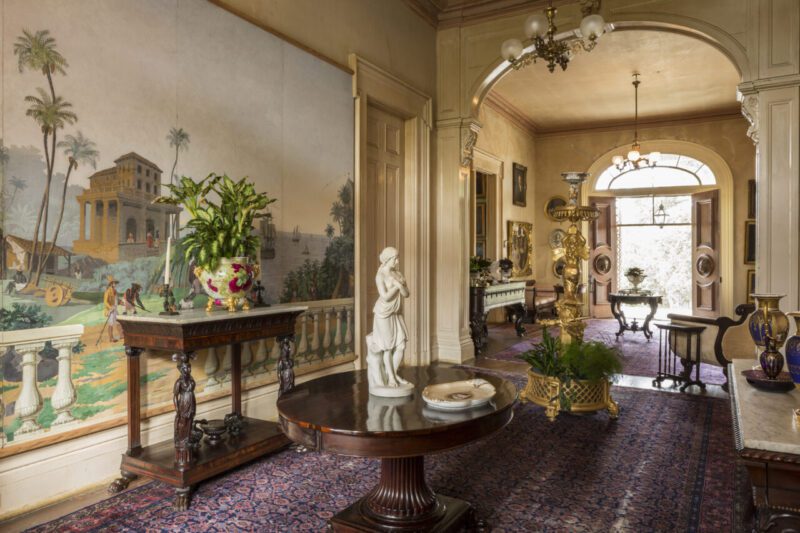
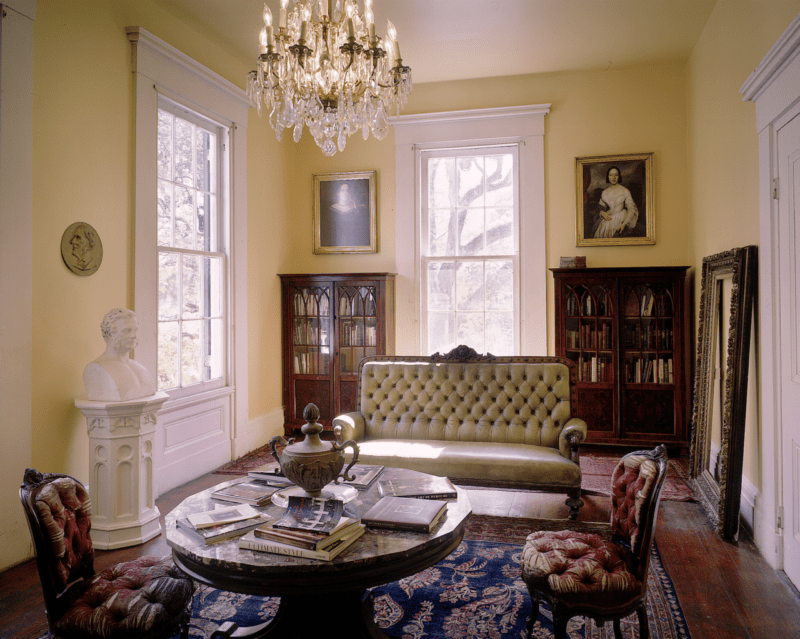
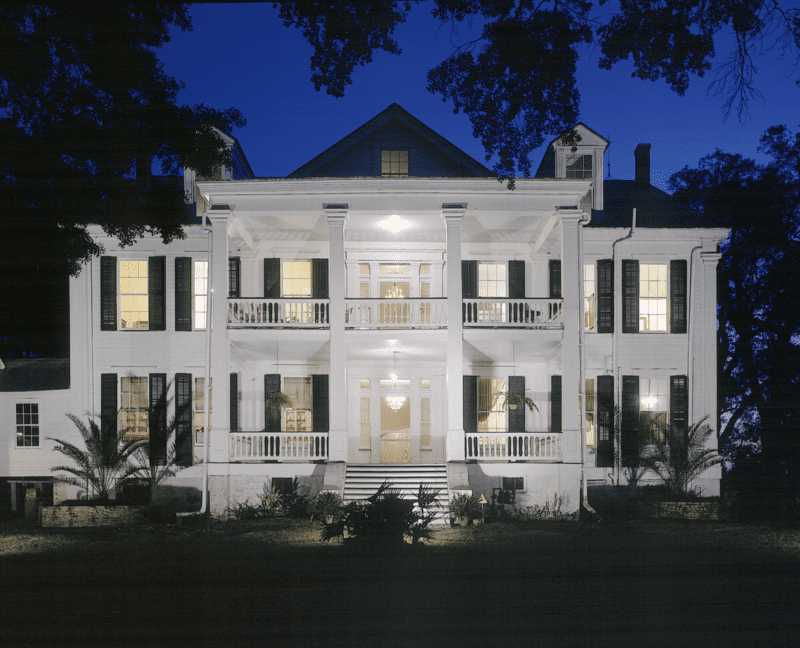
LAKESIDE MANSION, 1832 – BATCHELOR, LOUISIANA
Built upon land once given to the Marquis de Lafayette from a grateful Thomas Jefferson during the Louisiana Purchase, Lakeside mansion’s distinctions are myriad. Beyond its famously pink-painted exterior, there is a unique wrought-iron balcony, imported from Paris in the early 19th century; an elaborate series of gardens; and a ground-floor room with deep red walls and matching velvet sofas.
The antique furnishings, which Slonem has handpicked from markets and dealers, feel at home among the 18-foot-tall ceilings and Zuber wallpaper. As he puts it, this is a “primordially remote, quintessential romantic antebellum house.”
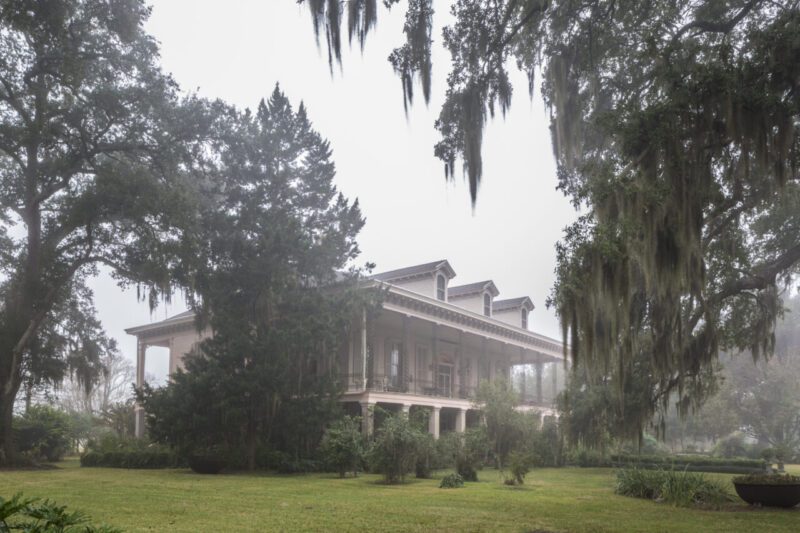
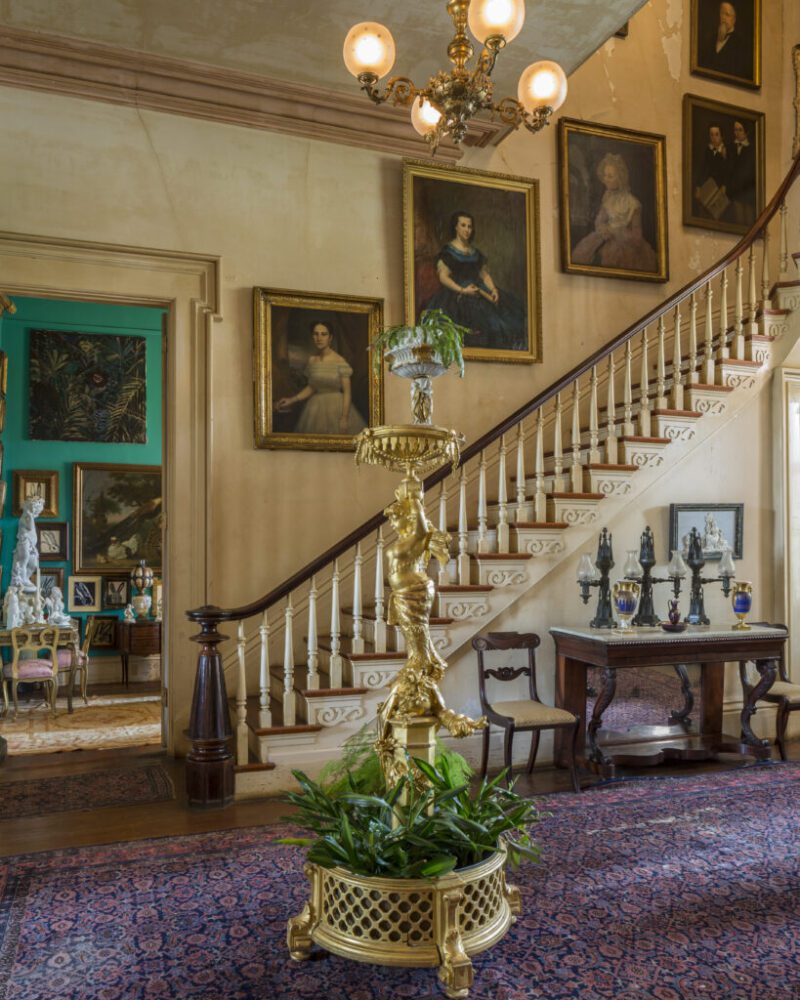
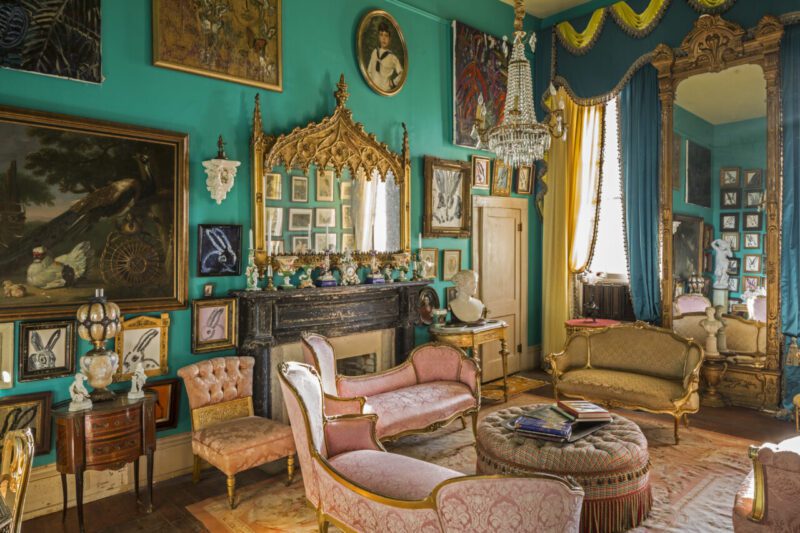
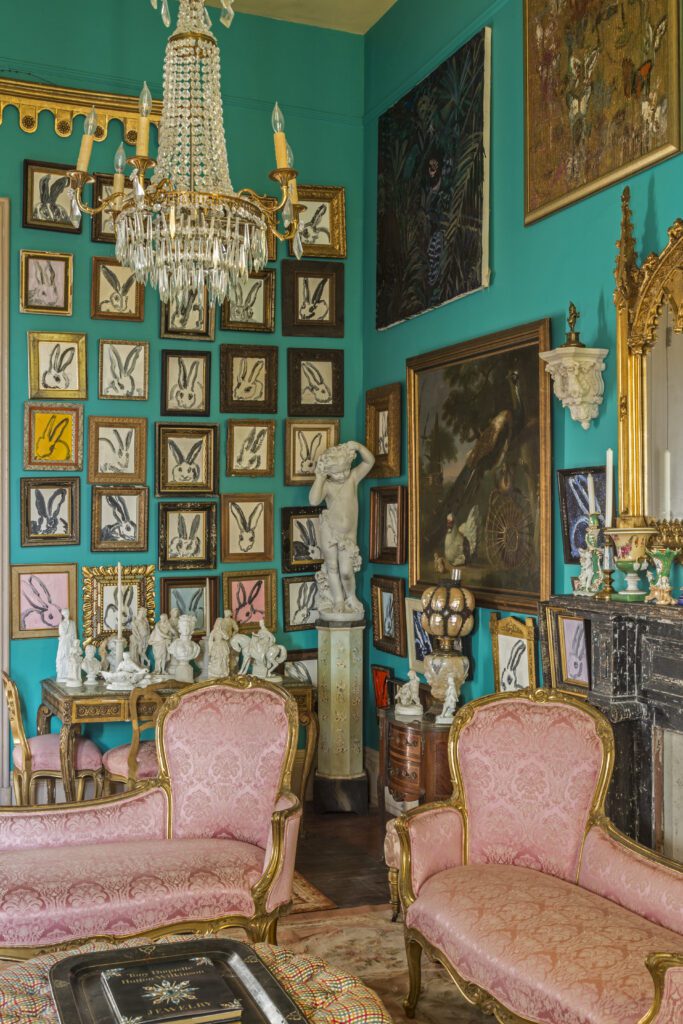
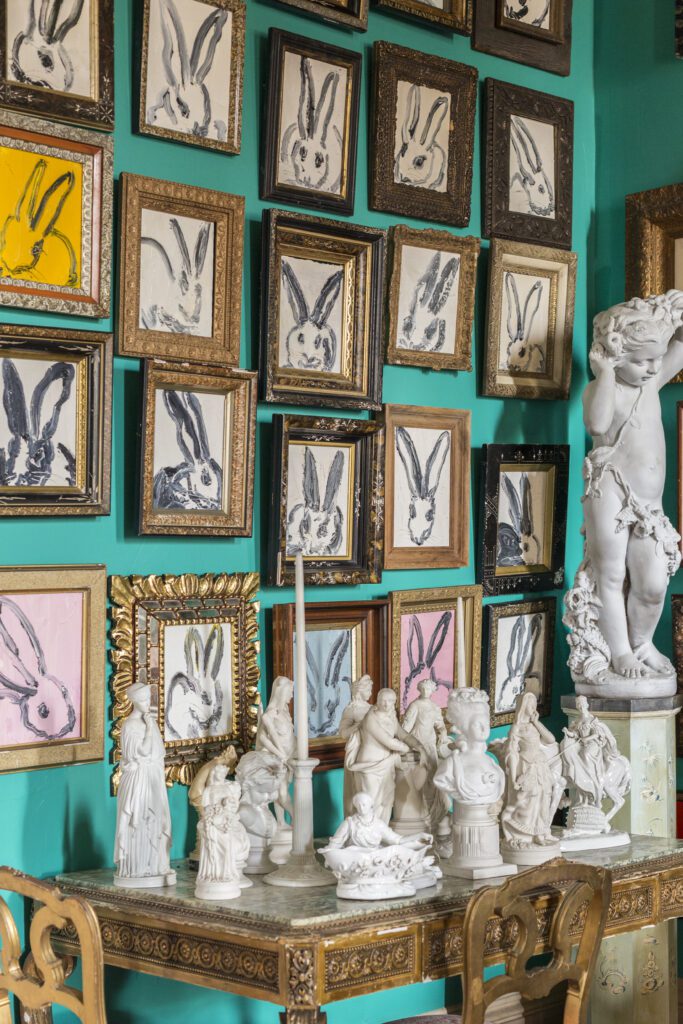
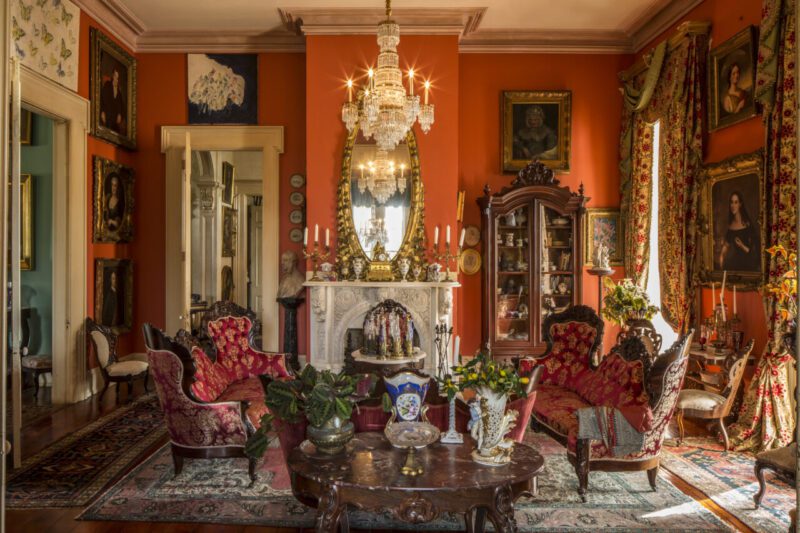
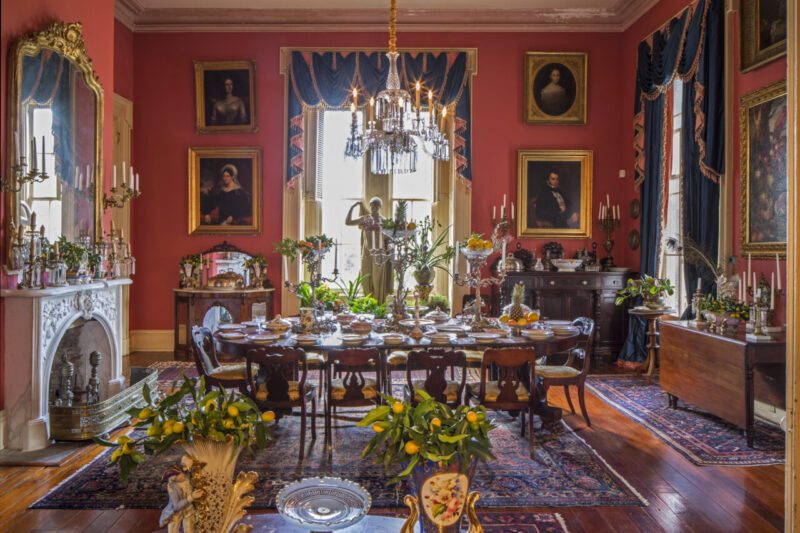

SCRANTON ARMORY, 1897, SCRANTON, PENNSYLVANIA
The Colonel Louis Watres Armory, built in 1900 and listed on the National Register of Historic Places, is Slonem’s latest project that showcases the artist’s novel take on interior design— matching vibrant, multicolor interiors with a bricolage of historically potent and rare items found from around the world. This system of “collectorating,” or collecting and decorating, has become Slonem’s trademark and can be found across the artist’s multiple historical properties around the country. Through the course of its century-old lifetime, the 102,000-square-foot space has served not only as an armory, but a performance hall for Russian composer and pianist Sergei Rachmaninoff, a whistle-stop for campaigning presidents, and even briefly as a clinic.
When Slonem first heard about the Armory, he was not thinking of adding it to his collection—it was a largely vacant space he rented in between moving studios in New York. But when he stepped inside this massive Romanesque Revival structure, he found an opportunity to preserve a crucial piece of American history: five presidents have stood at the armory’s drill hall, delivering campaign speeches to local voters.
The property is equipped with a unique series of underground tunnels and original swimming pool, and Slonem has since furnished the armory’s plentiful rooms with period furniture, new artworks, and refurbished chandeliers.
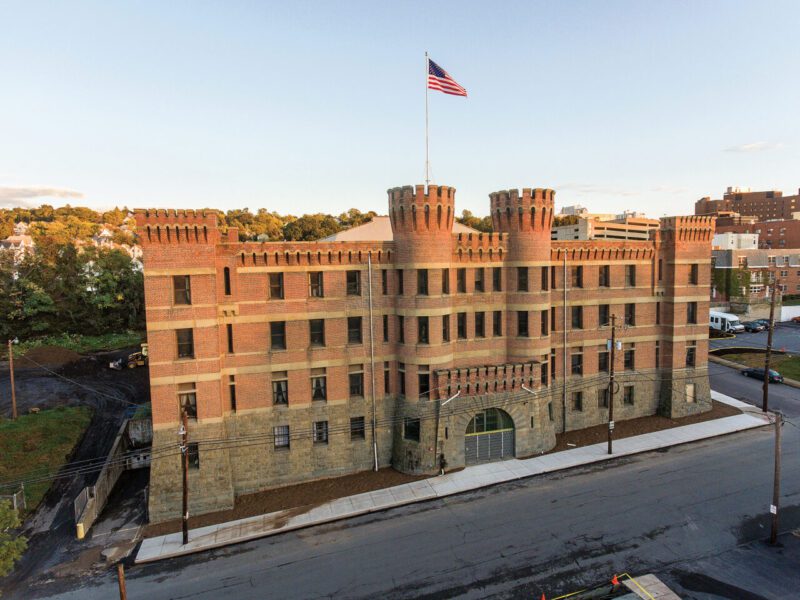
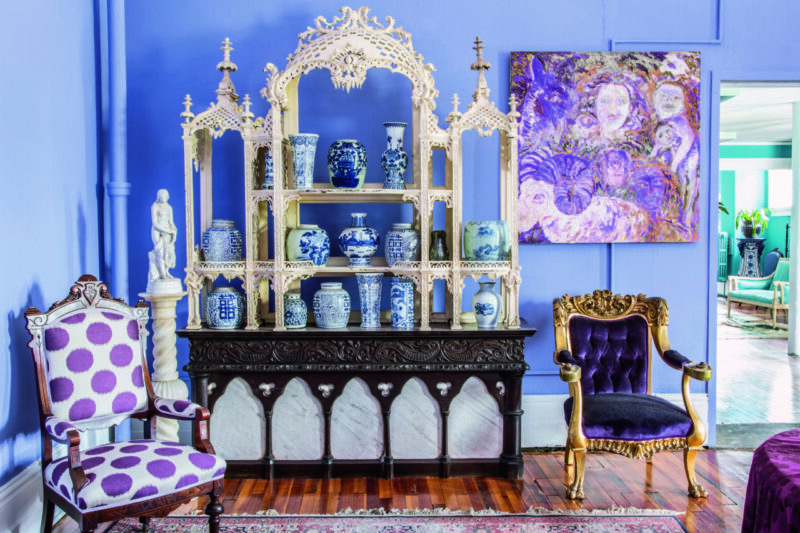
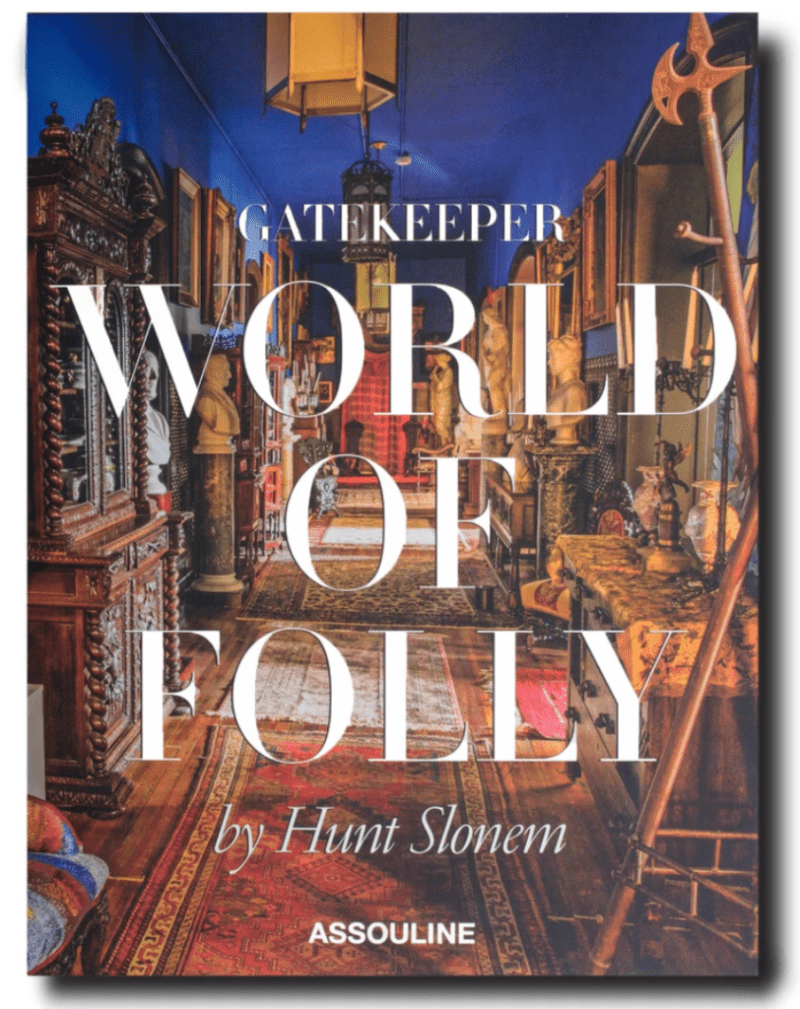
Others Not Pictured
BELLE TERRE, 1906, SOUTH KORTRIGHT, NY
The sprawling Belle Terre estate was first built as a summer home by copper baron James McLean. The estate embraces well beyond 30,000 square feet of quiet wilderness by the Catskills Mountains, complete with a private lake and rolling hills—ideal for fox hunting, which is what McLean had in mind when building it.
Eleanor Roosevelt, a frequent guest and friend of McLean’s daughter, once hosted a party on this site for 6,000 guests—an event that inspired Slonem to paint and hang several portraits of the former first lady around the property. The house’s Georgian architectural style marked a new direction in Slonem’s acquisitions, and his ongoing design emphasizes its original moldings and carvings while recapturing the elegant gilded age, selecting appropriate furniture to recreate the mood of its origins.
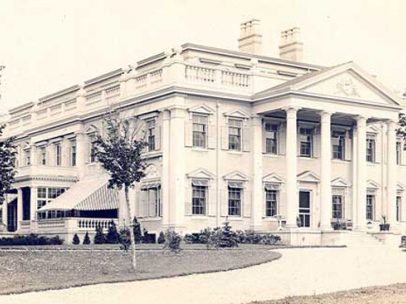
MADEWOOD MANSION, 1846, NAPOLEONVILLE, LOUISIANA
This 10,000 square-foot mansion is located on Bayou Lafourche, is a National Historic Landmark. Architecturally significant as the first major work of Henry Howard, Madewood is one of the finest Greek Revival mansions in the American South. Each doorway is signed by the artist, Cornealieus Hennessey.
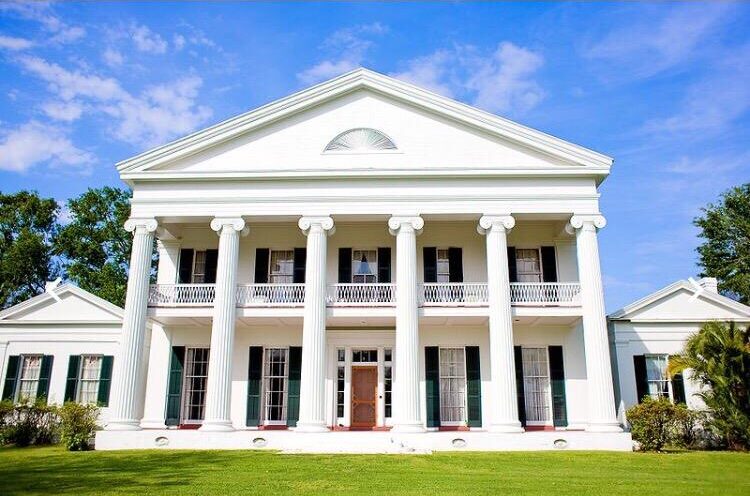

We hope you have enjoyed this journey into the magical world of Hunt Slonem! For more, you might be interested in his many books including Bunnies (Glitterari Inc., 2014), Birds (Glitterati Inc., 2017) and Hunt Slonem: An Art Rich and Strange (Harry N. Abrams, 2002). His studios and homes have been profiled in such books as When Art Meets Design (Assouline Publishing, 2014) and Pleasure Palaces: The Art and Homes of Hunt Slonem (powerHouse Books, 2007), among others. His latest is Gatekeeper: World of Folly (Assouline Publishing), showcasing his reclamation of the Scranton Armory, and its transition “from arms to art.”
To purchase his paintings and sculpture, please visit visit huntslonem.com or 1stDibs. You can also shop Slonem’s new “Hop Up Shop” (online and via Bergdorf Goodman) for a lovely assortment of tabletop, housewares, fashion, and accessories featuring his iconic subjects.



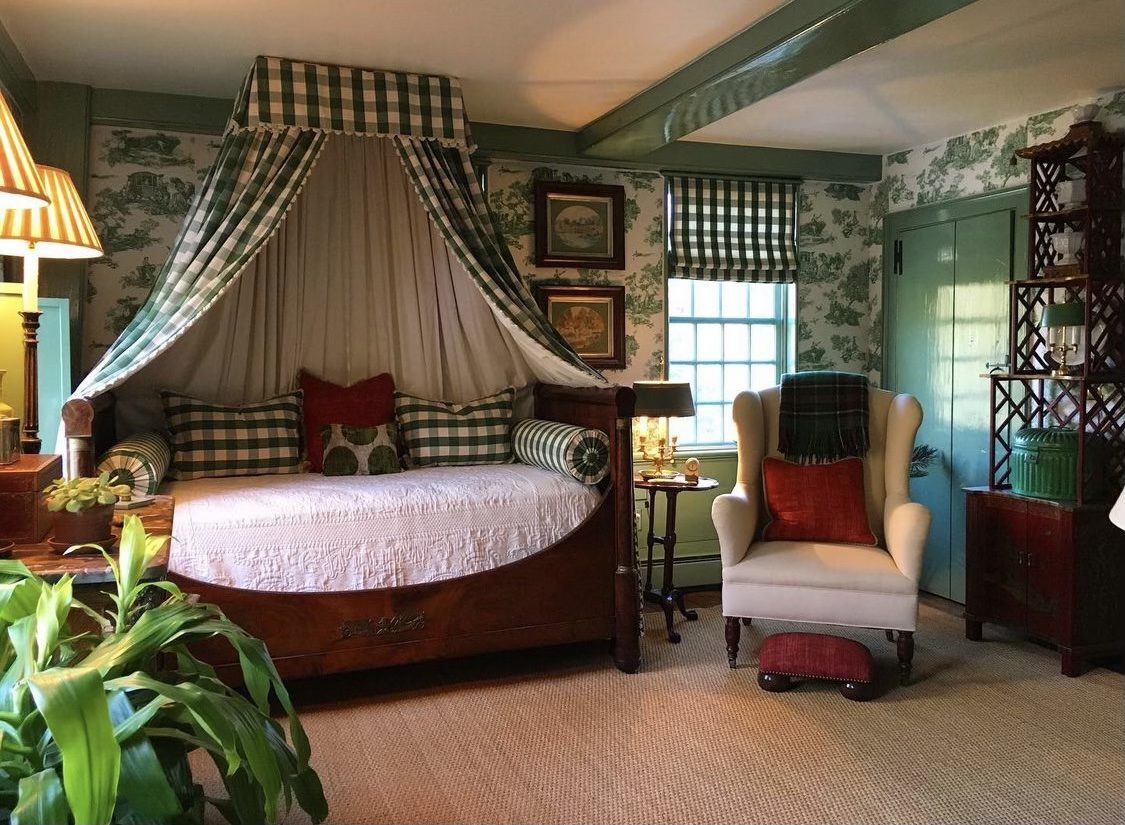


Ok what does Hunt do in his spare time?
The energy and investment and color – boundless! Hunt Slonem is a National Treasure. Thank you for this series on his work and life and inspiration.
So pleased that Hunt is acquiring all of these properties and stewarding them appropriately. I’ve only met him once, and he is charming and affable. All of the houses are simply amazing.
So glad Slonem bought these mansions. His decor is absolutely gorgeous in these mansions!
wonnderful old pictures wish i was able to see thhese wonderful houses in person
I hope I get to see what Hunt Slonem does with his latest acquisition in Great Barrington, MA. It is sure to be fabulous!